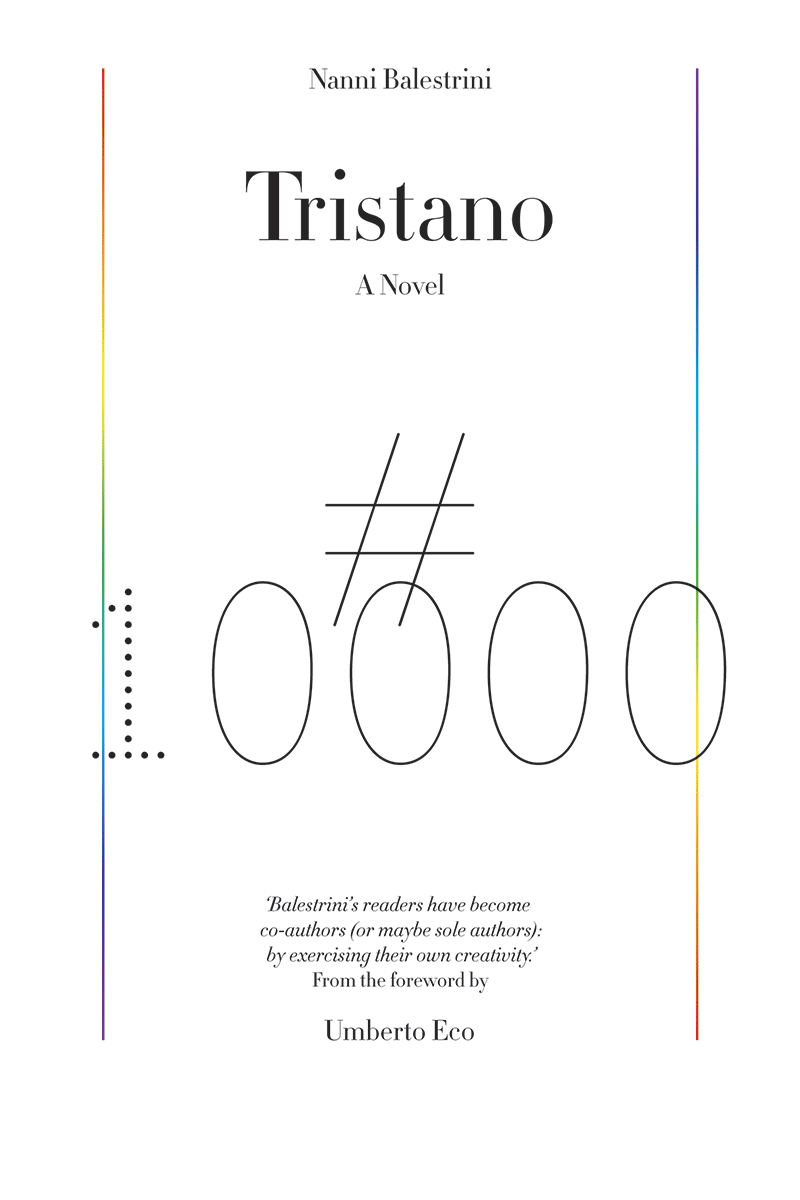The Tristano wars?


Literature does not get written in a technological void where its material conditions of production would be irrelevant. Quite the opposite actually, as the long tradition of writers and poets who enthusiastically engaged with the material texture of the book suggests: think of Raymond Queneau’s One Hundred Thousand Billion Poems, a flipbook presentation of 10 sonnets where the 14 lines on each page are printed on individual strips, so that every line can be replaced by the corresponding one in any of the other poems; or think of BS Johnson’s idiosyncratically experimental The Unfortunates, a “book in a box”, without any binding, so that the reader can assemble the book any way she likes. Nanni Balestrini’s Tristano directly comes out of this vibrant tradition of avant-garde, experimental literature.
Inspired by the legend of Tristan and Isolde, Tristano was first published in 1966 in Italian. But only recently has digital technology made it possible to realise the author’s original vision. The novel comprises ten chapters, and the fifteen pairs of paragraphs in each of these are shuffled anew for each published copy. No two versions are the same.
This radical testing of the limits of the novel both as a genre and a physical object did not fail to sparkle what might very much look like the harbingers of a fierce literary debate – or will it be a storm? Very recently, The Guardian ran two articles that evinced starkly opposed reactions to the book.
Lizzy Davies discussed this aesthetically very hot topic with the author himself, whom she met in Rome. Weaving the author’s reflections on "the stiff determinism of Gutenbergian mechanical typography" with the editorial history behind the text itself , Lizzy Davies sympathetically engages with the experiment, which she calls “something truly unique” in terms of reading experience.
“The 4,000 books that have been ordered by Verso are more than simple translations of that work.”
Holly Baxter, also writing for the Guardian, reacted in a more skeptical way.
“It is an artistic experiment, for sure, and one that will pique interest – but the last thing I want to do is sit down with it at the end of a long day and attempt to project meaning on to its obtuse pages. The publisher describes it as "an assault on the novel", which is at least something we can both agree on.”
As Baxter herself is prompt to acknowledge, Oulipian literary experiments that bring together algorithms and writing in a playful way “make [her] balk”. Pointing out that “this latest development shoves the reader centre stage”, “literature graduate” Baxter seems to recoil at such an idea, yet completely fails to engage critically with this (conservative) view that literature should not have anything to do with “technology.” This underlying trend is tellingly exemplified by the fact that Baxter devotes more textual space to raging against “the easily bored, chronically distracted, perpetually procrastinating Twitter generation, whose minds apparently begin to implode the second they have to deconstruct a more nuanced argument than can be slotted into 140 characters” rather than discussing the book itself. And when she actually does, her basic suggestion is that Tristano might as well be little more than “an incredibly astute marketing ploy, thinly cloaked in artistic rhetoric.”
For decades, nay, centuries, literary critics have stood up against avant-garde experiments in the name of artistic purity and the converse corruption of the time; like many experimental writers before him, Balestrini thinks otherwise.
